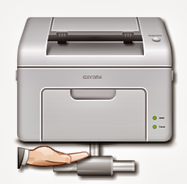Tips for avoiding Citrix Printer Spooler issues

The most important rule I can suggest is that, when adding a printer driver to a print server, use to the extent possible a native Windows driver. The sequence is as follows:
 (1) Using the Print Management console (preferable) or the printer folder’s “Server Properties” dialog (Drivers tab), get into the “Add Driver” wizard (select only x64 for now) and first look to see if the printer model is on the list (if both PCL and PS are available, just pick one – no real reason to have duplicate drivers).
(1) Using the Print Management console (preferable) or the printer folder’s “Server Properties” dialog (Drivers tab), get into the “Add Driver” wizard (select only x64 for now) and first look to see if the printer model is on the list (if both PCL and PS are available, just pick one – no real reason to have duplicate drivers).
(2) If it is not on the list, click (within the same wizard/dialog) the Windows Update button. After a while, a new larger list of printer models will appear (but some that were available in step (1) may disappear, so do both). If the model you want is on the list (it has a good chance of being there), use that.
(3) If it is still not there, go to https://catalog.update.microsoft.com and type the printer model into the search field – an available download for the 2008R2 / Win7 platform may appear. If so, download that.
(4) If you need to support 32-bit clients, do all the same steps as above, but for steps (1) and (2), do them from a 32-bit Windows 7 machine (build one if you don’t have one – a VM is perfect for this — and avoid actually installing any drivers on it so its printer list remains “pure”). The Print Manager console on 32-bit Windows 7 (part of the Remote Server Administration Tools, aka RSAT, an optional component) lets you install a 32-bit driver remotely to a 64-bit print server.
(5) If all else fails, use a download from the printer vendor, but make sure you get the simplest driver possible (no “setup.exe” download, no “printing system” software download, only drivers labeled as “network drivers”, or “inf setup drivers”, or “enterprise driver”, or “add driver wizard driver”, preferable any that are labeled as Citrix-compatible if the vendor has such a classification). In all cases, they should be drivers that, when downloaded and extracted, can be added via the “Have disk…” feature of the Add Driver wizard on the print server and let you point to a .inf file within the download.
Follow Jacques Bensimon on Twitter @JacqBens for more great Windows insights and tricks.

